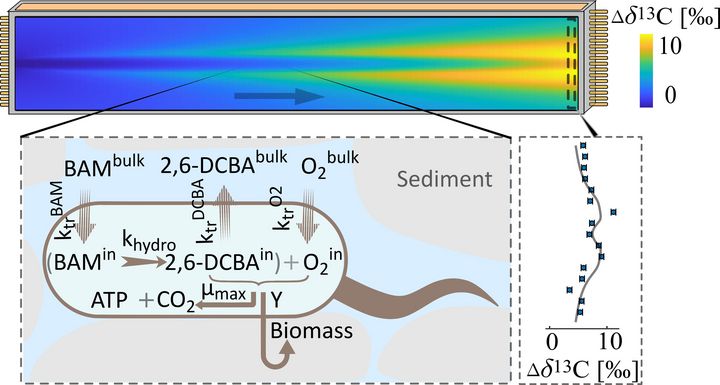Fengchao Sun, Adrian Mellage, Mehdi Gharasoo, Aileen Melsbach, Xin Cao, Ralf Zimmermann, Christian Griebler, Martin Thullner, Olaf A. Cirpka and Martin Elsner. Environmental Science & Technology (2021)
Abstract
Organic contaminant degradation by suspended bacteria in chemostats has shown that isotope fractionation decreases dramatically when pollutant concentrations fall below the (half-saturation) Monod constant. This masked isotope fractionation implies that membrane transfer is slow relative to enzyme turnover at µg L-1 substrate levels. Analogous evidence of mass transfer as a bottleneck for biodegradation in aquifer settings, where microbes are attached to sediment, is lacking. A quasi-two-dimensional flow-through sediment microcosm / tank system enabled us to study aerobic degradation of 2,6-dichlorobenzamide (BAM) while collecting sufficient samples at the outlet for compound-specific isotope analysis (CSIA). By feeding an anoxic BAM solution through the center inlet port and dissolved oxygen (DO) above and below, strong transverse concentration cross-gradients of BAM and DO yielded zones of low (µg L-1) steady-state concentrations. We were able to simulate the profiles of concentrations and isotope ratios of the contaminant plume using a reactive-transport model that accounted for a mass transfer limitation into bacterial cells, where apparent isotope enrichment factors *ε decreased strongly below concentrations around 600 µg/L BAM. For biodegradation of organic micropollutants, mass transfer into the cell emerges as a bottleneck, specifically at low (µg L-1) concentrations. Neglecting this effect when interpreting isotope ratios at field sites may lead to a significant underestimation of biodegradation.
